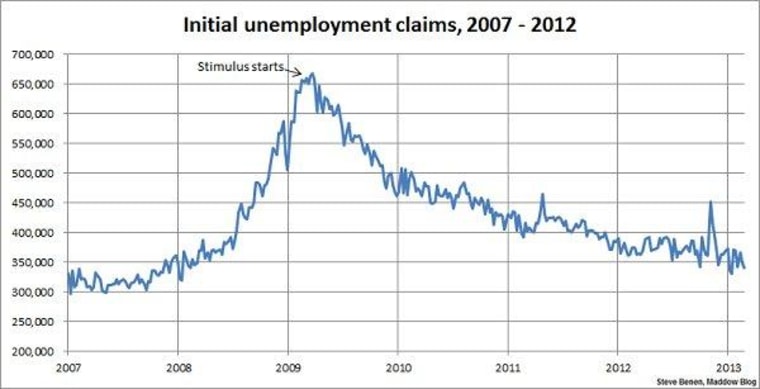After last week's good news on initial unemployment claims, the expectations were that the new report from the Department of Labor would show an uptick. Instead, the good news got a little better.
The number of people who applied for new U.S. unemployment benefits fell by 7,000 to 340,000 in the week ended March 3, suggesting further improvement in the U.S. labor market. It was the third lowest number of initial claims in five years, according to Labor Department data. Economists surveyed by MarketWatch had expected claims to rise to a seasonally adjusted 353,000 from a revised 347,000 in the prior week. The average of new claims over the past month, which smoothes out weekly volatility, fell by 7,000 to 348,750, touching its lowest level since March 2008.
The effects of sequestration do not yet appear to be affecting the results. Indeed, the job market is showing clear signs of real improvement, at least until deep spending cuts take a bite out of the progress.
To reiterate the point I make every Thursday morning, it's worth remembering that week-to-week results can vary widely, and it's best not to read too much significance into any one report.
In terms of metrics, when jobless claims fall below the 400,000 threshold, it's considered evidence of an improving jobs landscape, and when the number drops below 370,000, it suggests jobs are being created rather quickly. We've been below the 370,000 threshold 11 of the last 13 weeks.
Above you'll find the chart showing weekly, initial unemployment claims going back to the beginning of 2007. (Remember, unlike the monthly jobs chart, a lower number is good news.) For context, I've added an arrow to show the point at which President Obama's Recovery Act began spending money.
